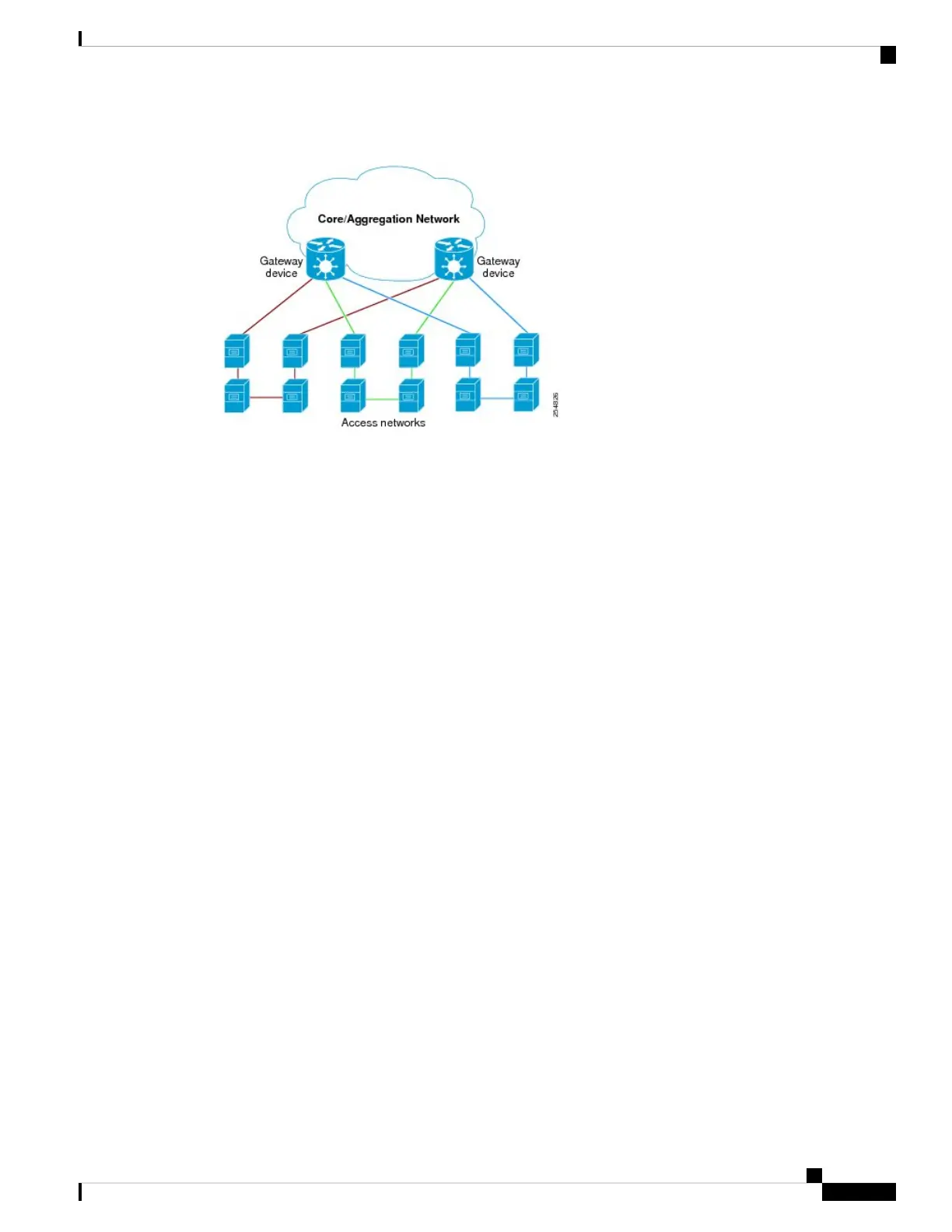Figure 57: Core or Aggregation Network
It is possible for the gateway devices to also participate in the STP protocol. However, since each gateway
device may be connected to many access networks, this would result in one of two solutions:
• A single topology is maintained covering all of the access networks. This is undesirable as it means
topology changes in one access network could impact all the other access networks.
• The gateway devices runs multiple instances of the STP protocol, one for each access network. This
means a separate protocol database and separate protocol state machines are maintained for each access
network, which is undesirable due to the memory and CPU resource that would be required on the gateway
device.
It can be seen that both of these options have significant disadvantages.
Another alternative is for the gateway devices to tunnel protocol BPDUs between the legs of each access
network, but not to participate in the protocol themselves. While this results in correct loopfree topologies, it
also has significant downsides:
• Since there is no direct connection between the legs of the access ring, a failure in one of the leg links
is not immediately detected by the access device connected to the other leg. Therefore, recovery from
the failure must wait for protocol timeouts, which leads to a traffic loss of at least six seconds.
• As the gateway devices do not participate in the protocol, they are not aware of any topology changes
in the access network. The aggregation network may therefore direct traffic destined for the access
network over the wrong leg, following a topology change. This can lead to traffic loss on the order of
the MAC learning timeout (5 minutes by default).
Access gateway is a Cisco feature intended to address this deployment scenario, without incurring the
disadvantages of the solutions described above.
Overview of Access Gateway
Access gateway is based on two assumptions:
• Both gateway devices provide connectivity to the core or aggregation network at all times. Generally,
resiliency mechanisms used within the core or aggregation network are sufficient to ensure this is the
case. In many deployments, VPLS is used in the core or aggregation network to provide this resiliency.
• The desired root of all of the spanning trees for each access network is one of the gateway devices. This
will be the case if (as is typical) the majority of the traffic is between an access device and the core or
aggregation network, and there is little if any traffic between the access devices.
L2VPN and Ethernet Services Configuration Guide for Cisco ASR 9000 Series Routers, IOS XR Release 6.3.x
419
Implementing Multiple Spanning Tree Protocol
Overview of Access Gateway

